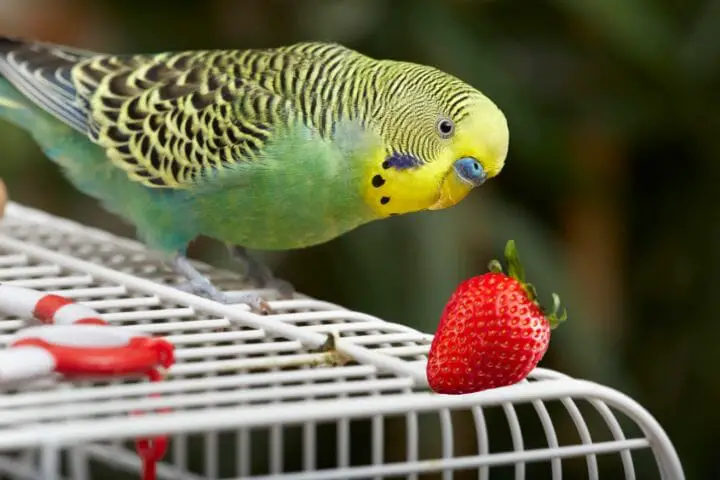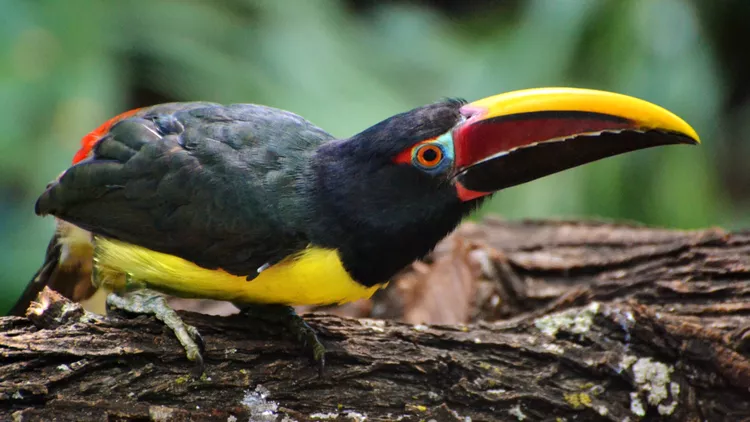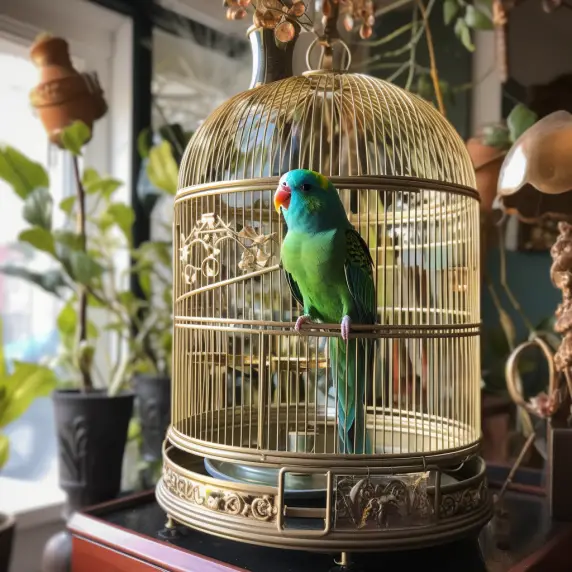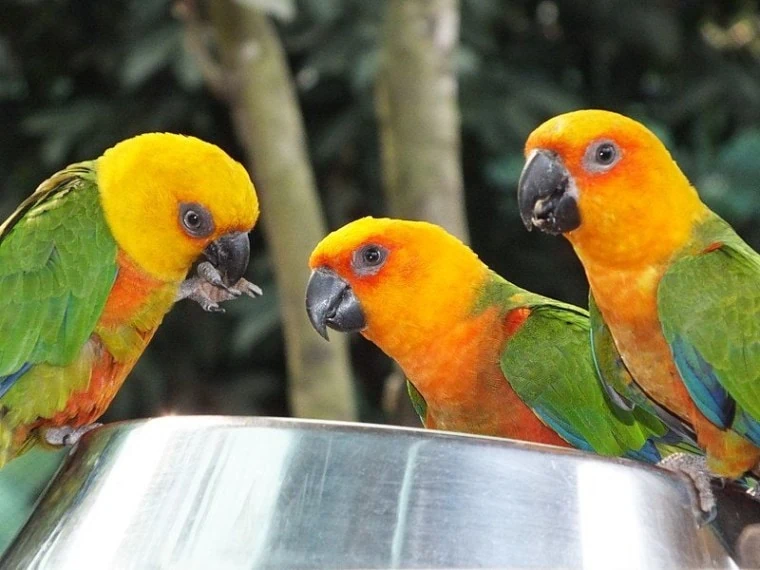Setting Up the Perfect Bird Cage Environment
Learn how to set up the perfect bird cage environment for your feathered friend. This comprehensive guide covers all the essential aspects to ensure a happy, healthy, and comfortable home for your pet bird.
Summary of Things You Should Know
- Buy a cage that is a minimum of two times the height and width of your new bird. Ensure that the bars are appropriately spaced and made from a durable material, such as stainless steel.
- Place the cage in a room with an enjoyable view. Avoid positioning it near open windows or doors without screens, and keep it away from rooms that experience extreme temperatures.
- Line the bottom of the bird cage with paper towels or newspaper to make cleaning more manageable.
- Equip the cage with essential items like perches, a bird bath, food and water dishes, and safe toys.
Choosing the Right Cage
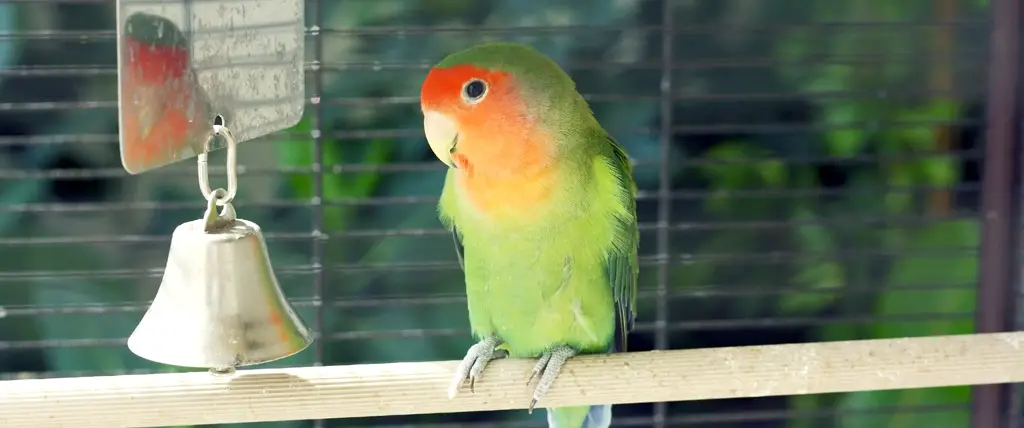
A crucial aspect of setting up the ideal bird cage environment is selecting the right cage for your bird. Paying attention to size, materials, and style can make a significant difference in your bird’s comfort and well-being.
Sizing considerations:
- Your bird should be able to fully extend its wings without touching the cage sides.
- The cage should be large enough to accommodate perches, toys, and feeding stations without overcrowding.
- Bigger birds, like parrots, require even larger cages for exercise and playtime.
Materials and construction:
- Look for cages made of stainless steel or powder-coated metal, as they are durable, non-toxic, and easy to clean.
- Avoid cages made of materials that can rust, chip, or break easily, as they may pose a danger to your bird.
- Choose a cage with a solid floor and a removable tray for easy cleaning.
Cage styles:
- Dome-topped cages provide extra space for climbing and playing, which is especially suitable for active birds.
- Playtop cages feature an additional play area on top, offering more room for your bird to explore and exercise outside of the cage.
- Flight cages are designed for smaller birds that need ample space for flying, helping them stay active and engaged.
Bar spacing and orientation:
- Choose a cage with appropriate bar spacing to prevent your bird from getting its head stuck between the bars.
- Horizontal bars encourage climbing and exercise, while vertical bars provide stability for perches and toys.
- For larger birds, opt for cages with thicker bars to withstand their powerful beaks and prevent damage.
By carefully considering these factors, you’ll be on your way to selecting the right cage that ensures both safety and comfort for your feathered friend.
Positioning the Cage in Your Home
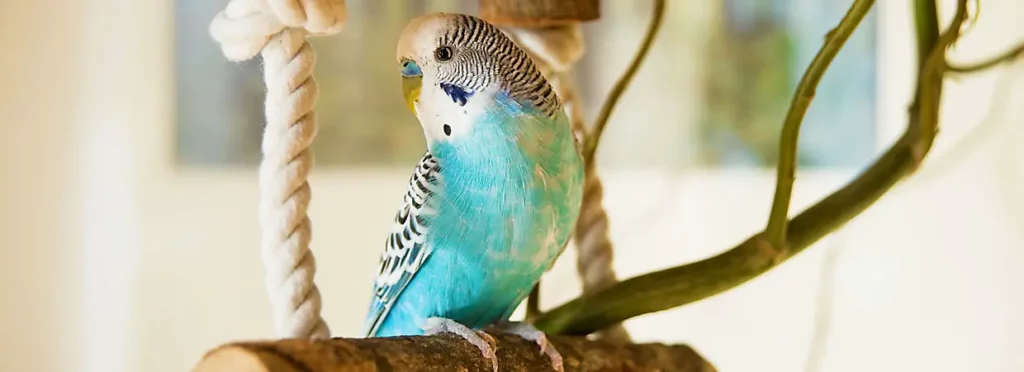
Finding the perfect spot for your bird cage is essential to create a comfortable environment for your pet. Factors such as lighting, temperature, noise, and safety should be taken into account when choosing the right location.
Lighting and temperature:
- Place the cage in a well-lit area with access to natural light, but avoid direct sunlight, which can cause overheating.
- Maintain a consistent temperature between 65-80°F (18-27°C) in the room, depending on the bird species.
- Ensure that the cage is not exposed to extreme temperature fluctuations by avoiding placement near heating or cooling vents.
Noise and activity levels:
- Choose a location with moderate activity, where your bird can interact with family members but not be constantly disturbed.
- Avoid positioning the cage in high-traffic areas or places with loud noises, as this can cause stress for your bird.
- Keep in mind that birds are sensitive to sounds and can benefit from some quiet time during the day.
Proximity to windows and drafts:
- Place the cage near a window for natural light and visual stimulation, but avoid direct sunlight or drafty areas.
- Ensure that the cage is not directly in front of a window, as birds can become frightened by outdoor activity or sudden changes in light.
- To prevent drafts, avoid placing the cage near doors or air vents, which can cause discomfort and health issues for your bird.
Safety and hazards:
- Keep the cage away from toxic plants, electrical wires, and other hazards that could harm your bird.
- Position the cage against a wall or in a corner for added security and to make your bird feel more protected.
- Be mindful of other pets in the household and ensure that the cage is not accessible to them, preventing potential harm to your bird.
By carefully considering these factors and tailoring the cage location to your bird’s needs, you will create a comfortable and safe environment for your feathered friend to thrive.
Selecting and Arranging Perches
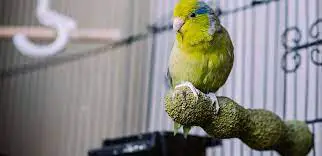
Perches are an essential component of your bird’s cage environment. Providing a variety of perches with different materials, sizes, and placement helps ensure proper foot care and encourages exercise and exploration.
Perch materials and sizes:
- Offer a variety of materials, such as natural wood, rope, and calcium perches, to promote foot health and prevent pressure sores.
- Avoid using plastic or sandpaper-covered perches, as they can be uncomfortable and harmful to your bird’s feet.
- Select perches with varying diameters to promote proper foot exercise and grip, preventing muscle fatigue and cramping.
Perch placement and diversity:
- Position perches at different heights and angles within the cage to encourage climbing and exercise.
- Ensure that at least one perch is near food and water stations for easy access.
- Place a comfortable perch near the top of the cage for sleeping, but away from drafts or direct light.
- Avoid overcrowding the cage with perches, as this can limit your bird’s ability to move around freely.
Ensuring proper foot care:
- Regularly inspect your bird’s feet for signs of injury, swelling, or infection.
- Keep perches clean by scrubbing them with a bird-safe disinfectant and allowing them to dry thoroughly before returning them to the cage.
- Replace worn or damaged perches to maintain a safe and comfortable environment for your bird.
By providing a diverse selection of perches and arranging them thoughtfully within the cage, you’ll help promote your bird’s overall health and well-being while encouraging natural behaviors and exercise.
Toys and Enrichment
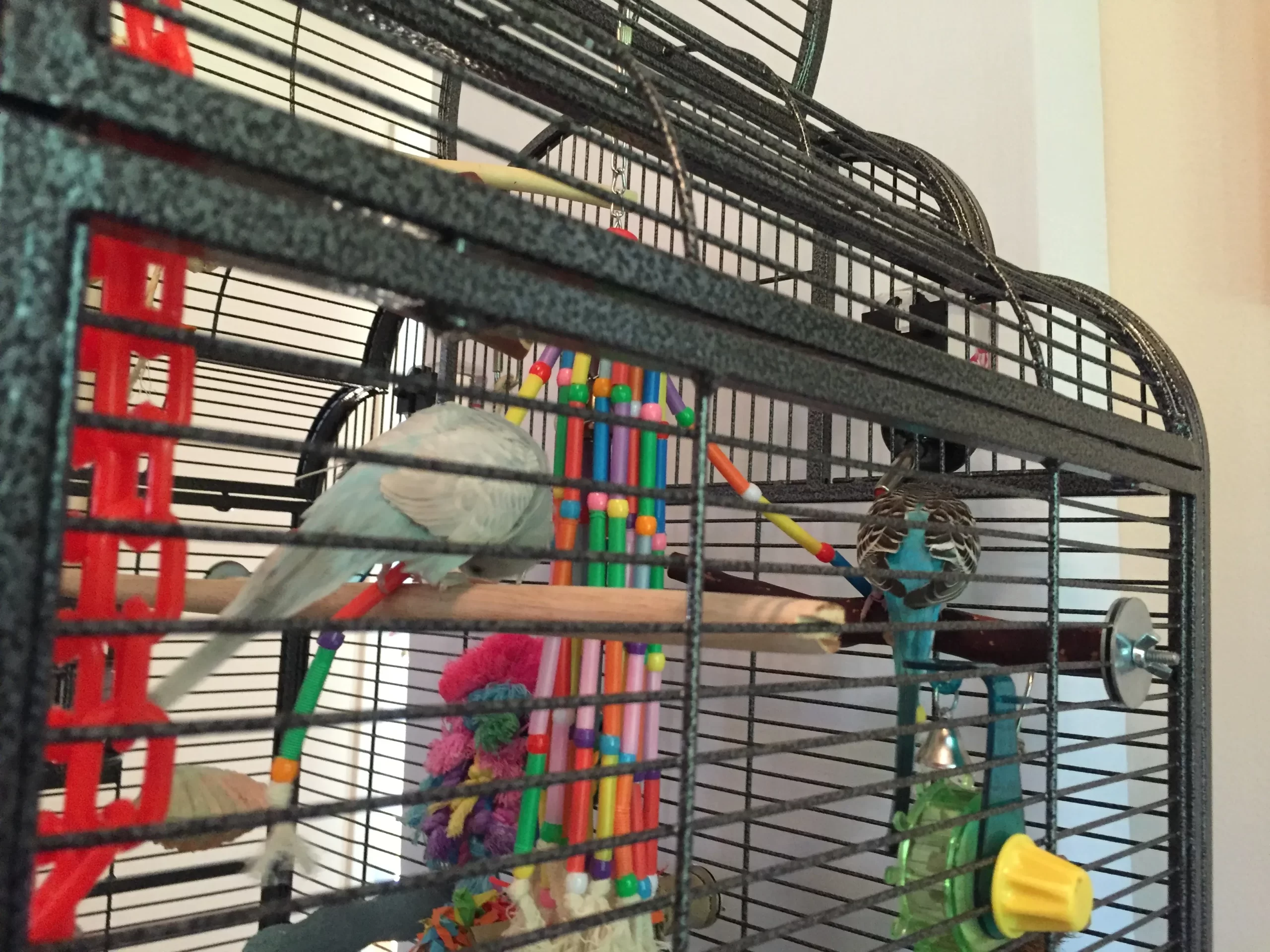
Toys and enrichment are essential for your bird’s mental stimulation and overall happiness. Providing a variety of toys and activities can prevent boredom, reduce stress, and encourage natural behaviors.
Importance of mental stimulation:
- Mental stimulation helps prevent behavioral issues, such as feather plucking or excessive screaming, which can arise from boredom and stress.
- Toys can help keep your bird’s mind active, promote problem-solving skills, and reduce the risk of depression.
Choosing age-appropriate toys:
- Select toys suitable for your bird’s size, age, and species to ensure safety and enjoyment.
- Opt for toys made from bird-safe materials, such as natural wood, rope, and leather.
- Offer a mix of toys, including foraging toys, chew toys, puzzles, and climbing toys, to engage your bird in a range of activities.
Rotating toys for variety:
- Rotate toys regularly to maintain your bird’s interest and provide new challenges.
- Avoid overcrowding the cage with toys, as this can restrict movement and create a cluttered environment.
- Observe your bird’s preferences and adjust the toy selection accordingly to ensure they remain engaged and stimulated.
DIY bird toy ideas:
- Create homemade toys using bird-safe materials, such as cardboard tubes, paper, or natural fibers, to provide low-cost enrichment.
- Offer items from nature, such as pinecones or branches, for your bird to explore and chew on.
- Ensure that any DIY toys are free from toxic materials, sharp edges, or choking hazards to keep your bird safe.
By offering a variety of toys and enrichment activities, you’ll help keep your bird mentally stimulated, engaged, and happy in their cage environment. Remember to monitor your bird’s interaction with toys and replace any damaged or worn-out items to maintain safety.
Food and Water Stations
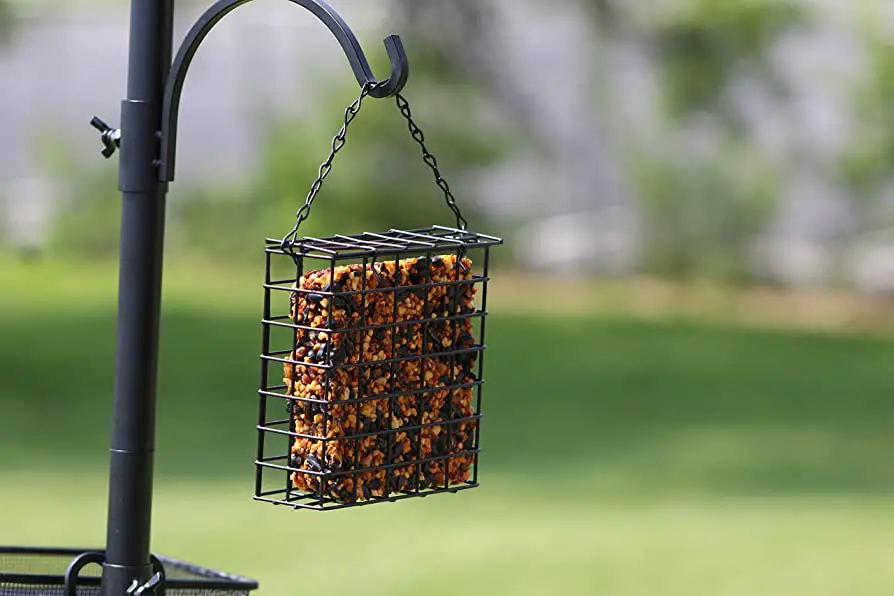
Setting up appropriate food and water stations in your bird cage is crucial for maintaining your bird’s health and well-being. Proper placement, cleanliness, and prevention of contamination are essential aspects to consider.
Types of feeders and waterers:
- Choose feeders and waterers made from bird-safe materials, such as stainless steel or BPA-free plastic, which are easy to clean and durable.
- Opt for separate dishes for food, water, and treats to prevent contamination and encourage a balanced diet.
- Consider using specially designed feeders, such as foraging feeders or drip waterers, to promote natural behaviors and minimize mess.
Placement and cleaning:
- Position food and water stations away from perches to minimize waste and contamination.
- Ensure that feeders and waterers are easily accessible to your bird and are placed at a comfortable height.
- Clean food and water dishes daily with warm, soapy water and a bird-safe disinfectant to prevent bacterial growth and maintain a hygienic environment.
Preventing contamination:
- Monitor your bird’s food intake and remove any spoiled or uneaten food promptly to minimize the risk of bacterial growth and contamination.
- Avoid placing food or water dishes directly beneath perches, where they can be contaminated by droppings.
- Regularly inspect and replace any damaged or worn feeders and waterers to maintain a clean and safe environment.
By providing well-maintained food and water stations in your bird cage, you’ll help ensure your feathered friend receives proper nutrition and hydration, contributing to their overall health and happiness.
Cage Lining and Maintenance
Maintaining a clean and hygienic bird cage environment is essential for your bird’s health and well-being. Choosing the right cage liner and establishing a consistent cleaning routine are key factors in achieving this goal.
Selecting cage liners:
- Opt for non-toxic, absorbent materials, such as paper towels, butcher paper, or newspaper, which can be easily replaced and disposed of.
- Avoid using materials like sand, corn cob, or walnut shells, as they can harbor bacteria and fungi, posing a risk to your bird’s health.
- Consider using custom-sized cage liners for a perfect fit and to simplify the cleaning process.
Daily cleaning routine:
- Remove and replace cage liners daily to minimize bacterial growth and maintain a clean environment.
- Wipe down cage bars, perches, and accessories with a damp cloth and bird-safe disinfectant to remove any droppings or debris.
- Wash food and water dishes thoroughly with warm, soapy water and rinse well before refilling.
Deep-cleaning schedule:
- Perform a deep clean of the entire cage at least once a month, or more frequently for larger birds or those with specific health concerns.
- Remove your bird from the cage and place it in a secure area during the cleaning process.
- Use a bird-safe disinfectant and scrub all surfaces, including bars, floor, and accessories, to remove any built-up grime or dirt. Rinse thoroughly and allow the cage to dry completely before returning your bird.
By maintaining a clean and hygienic environment within your bird cage, you’ll help prevent health issues and create a comfortable space for your feathered friend to thrive.
Creating a Safe and Secure Environment
Ensuring that your bird’s environment is safe and secure is a top priority for any responsible bird owner. Bird-proofing the surrounding area, monitoring interactions with other pets, and preparing for emergencies are essential aspects to consider.
Bird-proofing the surrounding area:
- Remove any toxic plants or potentially harmful objects within your bird’s reach.
- Ensure that electrical wires are covered or hidden to prevent your bird from chewing on them.
- Secure any window screens and keep doors closed to minimize the risk of your bird escaping.
Monitoring interactions with other pets:
- Supervise interactions between your bird and other household pets to prevent accidents or injuries.
- Create a designated “bird-safe” area in your home where your bird can explore and play without the risk of encountering other pets.
- Educate family members on the importance of monitoring pet interactions and establishing boundaries to ensure the safety of all animals in the household.
Preparing for emergencies:
- Keep an emergency kit on hand, including items such as a bird-safe heating pad, styptic powder, and a spare cage for temporary housing.
- Have contact information for your veterinarian or an avian specialist readily available in case of an emergency.
- Familiarize yourself with common bird health issues and warning signs, and be prepared to act quickly if you notice any symptoms.
By taking the necessary precautions and creating a safe and secure environment for your bird, you’ll help ensure their well-being and reduce the risk of accidents or injuries. This proactive approach will give you peace of mind, knowing that your feathered friend is protected and cared for.
Monitoring and Adapting to Your Bird’s Needs
Every bird is unique, and their individual needs may vary depending on factors such as age, species, and health conditions. Regularly monitoring your bird’s behavior and adjusting their environment as needed will help ensure their comfort and well-being.
Observing behavior and preferences:
- Pay attention to your bird’s preferences regarding toys, perches, and cage location, and make adjustments accordingly.
- Monitor your bird’s behavior for any signs of stress or discomfort, such as excessive vocalization, feather plucking, or lethargy.
- Consult with an avian veterinarian if you notice any concerning changes in your bird’s behavior or health.
Accommodating special needs:
- Be aware of any specific requirements for your bird’s species, such as temperature, humidity, or dietary needs, and make adjustments as needed.
- If your bird has any health issues or disabilities, consult with your veterinarian to ensure that their environment is tailored to their specific needs.
- Consider using adaptive perches or toys designed for birds with special needs to ensure their comfort and well-being.
Regular health checks and veterinary care:
- Perform routine health checks, including weighing your bird, inspecting their feathers and skin, and observing their droppings.
- Schedule regular check-ups with an avian veterinarian to monitor your bird’s health and address any concerns.
- Keep a record of your bird’s health history, including vaccinations, illnesses, and any changes in behavior or appearance.
By actively monitoring and adapting to your bird’s needs, you’ll create a supportive and comfortable environment that fosters their overall well-being. This attentive approach will help you build a strong bond with your feathered friend and ensure that they thrive in their perfect bird cage environment.
Frequently Asked Questions
How often should I change the bird cage liner?
Ideally, you should change the birdcage liner daily to maintain cleanliness and minimize the risk of bacterial growth.
Can I place my bird cage near an air vent or heating source?
It’s best to avoid placing the cage near air vents or heating sources, as they can create drafts or cause temperature fluctuations, which may be harmful to your bird.
How can I prevent my bird from escaping the cage?
Use secure cage locks or clips and monitor your bird during out-of-cage time to ensure a safe environment.
Is it okay to cover my bird’s cage at night?
Yes, covering the cage at night can help create a calm environment for your bird to sleep. Make sure to use a breathable fabric that allows for air circulation.
How do I know if my bird is happy in its new environment?
Observe your bird’s behavior and body language. Signs of happiness include vocalizing, playing with toys, preening, and showing interest in their surroundings. If you notice any changes in behavior, consult with a veterinarian or avian specialist.
Final Thoughts
Setting up the perfect bird cage environment involves careful consideration of various factors such as cage selection, positioning, perches, toys, food and water stations, cleanliness, safety, and adapting to your bird’s unique needs.
By following the guidelines provided in this blog post, you’ll be well on your way to creating a comfortable, stimulating, and nurturing space for your feathered friend to thrive. Remember that observing your bird’s behavior and making adjustments as needed is crucial for their well-being.
With dedication and attention to detail, you can ensure that your bird’s home is a safe and happy haven that supports their physical and mental health.


